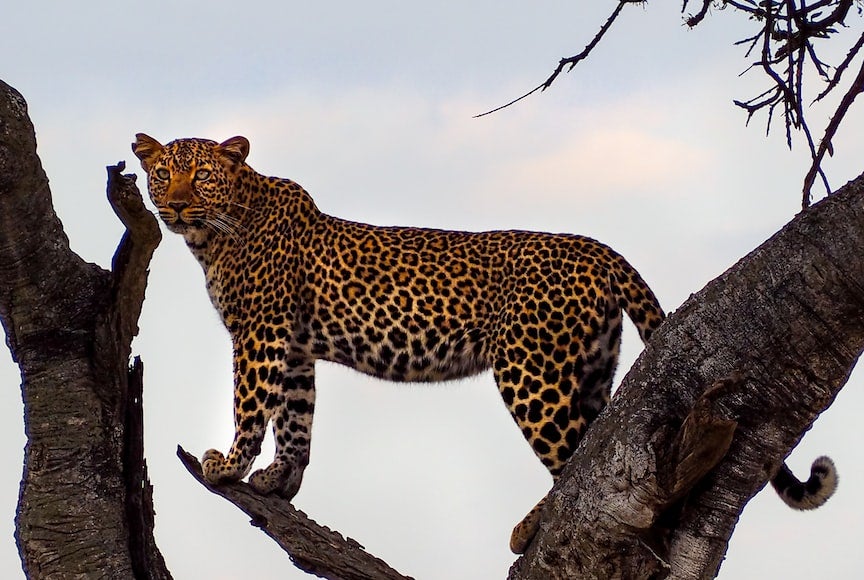Zimbabwean government establishes fund to compensate victims of human wildlife conflict
Funeral costs and hospital bills are covered under the fund, but critics question its sustainability and the lack of support for families left behind

By Farayi Machamire for Zim Morning Post
Zimbabwe’s Government has established a fund to pay medical bills or provide funeral assistance to victims of human-wildlife conflict but beyond that, families of the victims of fatal encounters with wildlife will continue to fend for themselves.
Cabinet announced that a recently set up Human-Wildlife Conflict Relief Fund for Victims will ensure that any person who is attacked by a wild animal will receive state support under three categories, namely: death, maiming, and injuries.
But questions remain on life after fatal encounters with wildlife.
There is currently no law that mandates authorities to compensate victims of human-wildlife conflict, although a Wildlife Policy is said to be under review.
Before this fund, Rural District Councils (RDCS), who annually receive revenue generated from wildlife, mainly from safari hunting, have assisted bereaved families with funeral support in some instances. By and large that financial support has been sporadic and insufficient, victims say.
“Communities have no control over monetary gains from wildlife, which are administered by RDCs and the Safari Operators,” said a human wildlife conflict victim who requested anonymity fearing victimisation.
Sources say the funds paid in the form of concession fees to the RDCs are often diverted to other non-conservation activities.
It is also not clear what the hunting industry is doing for local communities in these affected areas under CAMPFIRE, a government-run community-based natural resource management programme.
Zimbabwe Parks and Wildlife Management Authority (ZimParks) on their part say they try, within the confines of the law, to provide consolation and other non-monetary options such as employment opportunities for affected villages. However, it is not enough.
It is little wonder why the relationship between affected communities and authorities remains volcanic.
For now, however, communities will have to make do with the recently introduced relief fund that aims to cushion victims of human-wildlife conflict by way of funeral assistance and an amount which will be paid towards hospitalisation and treatment with a set limit.
“The payments will cover three categories, namely: death, maiming, and injuries. A specialised human-wildlife conflict unit will be established under Zimparks,” Information minister Monica
Mutsvangwa told journalists during a post-Cabinet briefing.
Government says the fund is based on a self-financing model where proceeds from hunting and other crowdfunding activities will be mobilised to resource the Fund.
“These sources include reserving a hunting quota under the CITES granted quota, a levy on hunting revenue accruing to safari operators, Rural District Councils and conservancy owners,” Mutsvangwa said.
“The financing sources also include, among others, a percentage of wildlife commodities or products that are approved and monitored by Zimparks, CAMPFIRE proceeds and donations from the public, including funds from foundations set for wildlife conservation.
“Going forward, the fund will be extended to include preventative measures such as providing water in the game parks and enhancing grazing pastures. Sources of funding will also include the Treasury, while local structures will be incorporated into the programme.”
The Government incentive comes as Zimbabwe’s increasing human and wildlife populations have led to competition for limited resources between humans and animals.
In 1980, Zimbabwe had reached an elephant population of approximately 50 000, while the human population was 7.4 million.
In the year 2022, Zimbabwe’s population census estimated the number of people to have more than doubled to about 16 million.
The elephant population meanwhile, is now estimated at more than 85 000, with other species also showing significant growth.
“The consequent competition for limited resources often results in wildlife attacks on humans, especially in communal areas and towns that are close to national parks, safaris, forests and other protected areas. Consequently, people living adjacent to wildlife areas are always in danger of being attacked by the animals, and it has been established that the frequency of such attacks is increasing,” Mutsvangwa said.
According to ZimParks statistics, as of August 2022, at least 46 people have been lost to human-wildlife conflict.
Zimbabwe’s Government said through the ZimParks, it is implementing interventions to reduce human-wildlife conflict.
“The measures include conservation education in the use of barriers, translocation, sterilisation and selective culling of wildlife; approved hunting quotas; and fencing to restrict or control the movement of wildlife,” Mutsvangwa said.
In the same vein, Cabinet officials in the Environment portfolio say the real game changer would be Zimbabwe being granted permission to do a one-off sale of its elephant ivory and rhino horns stockpile – to fund conservation measures and community based conservation initiatives under a revamped Campfire.
That way, they say, the country will not need to carry a begging bowl to finance conservation of its wildlife heritage.
Animal activists, on the other hand, say while Zimbabwe’s call is noble, some question a lack of clarity in existing schemes supposed to direct money to wildlife and local communities and fear that any new mechanisms, under the same environment, could be susceptible to corruption and capture.
Observers say innovation is needed in the sector if Zimbabwe is to increase the benefit flow to local communities, particularly to ensure local people receive more tangible benefits, not just costs and liabilities from living with wildlife.
This article is reproduced here as part of the African Conservation Journalism Programme, funded in Angola, Botswana, Mozambique, and Zimbabwe by USAID’s VukaNow: Activity. Implemented by the international conservation organization Space for Giants, it aims to expand the reach of conservation and environmental journalism in Africa, and bring more African voices into the international conservation debate. Written articles from the Mozambican and Angolan cohorts are translated from Portuguese. Broadcast stories remain in the original language.
Read the original story here:

Join our commenting forum
Join thought-provoking conversations, follow other Independent readers and see their replies